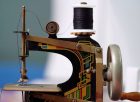Coffeetablebooks are a unique and captivating addition to any home or office setting

These books, typically oversized and visually stunning, are designed to be placed on coffee tables or other prominent surfaces, acting as both a decorative object and a source of inspiration or discussion. In this article, we will delve into the world of coffeetablebooks, exploring their significance, evolution over time, and what to consider when purchasing or creating one.
What are coffeetablebooks?
Coffeetablebooks are an art form in themselves, blending captivating visuals with informative content. They are usually larger in size compared to regular books, ranging from 9×12 inches to oversized editions measuring up to 24×36 inches. The oversized format allows for grandiose and vivid images to take center stage, creating an immersive experience for the reader. These books typically cover a wide range of topics, from photography and fashion to architecture and travel, offering a glimpse into various aspects of the world.
The significance of coffeetablebooks lies in their ability to enhance the aesthetic appeal of a space while also serving as conversation starters. Their size and eye-catching covers make them an undeniable focal point in any room, prompting guests to flip through their pages and engage in discussions about the topics they portray. Moreover, coffeetablebooks offer a unique opportunity for individuals to showcase and explore their personal interests and passions, providing a window into their tastes and personalities.
The evolution of coffeetablebooks

Coffeetablebooks have a rich history that dates back centuries. However, it was during the early 20th century that these books gained prominence as decorative objects. In the 1920s and 1930s, publishers started producing extravagant picture books with luxurious bindings and lavish illustrations. These books were initially designed for collectors, art enthusiasts, and the affluent elite. As time passed, coffeetablebooks became more accessible to the general public, catering to a broader range of interests and budgets.
In the 1960s and 1970s, coffeetablebooks experienced a revival, aligning with the countercultural movements of the time. These books became a platform for artists, photographers, and writers to express their creativity and challenge societal norms. The content expanded beyond conventional subjects, pushing boundaries and embracing diverse perspectives. This era marked a turning point for coffeetablebooks, making them more than just decorative objects but also tools for intellectual and creative exploration.
Today, coffeetablebooks continue to evolve, incorporating innovative designs, interactive elements, and digital enhancements. With the advent of technology, some coffeetablebooks now offer augmented reality experiences, allowing readers to delve deeper into the visuals and gain a more immersive understanding of the subject matter. Furthermore, the rise of self-publishing platforms has democratized the creation and distribution of coffeetablebooks, making it easier for individuals to showcase their work and share their passions with a wider audience.
What to consider when purchasing or creating a coffeetablebook
When purchasing or creating a coffeetablebook, there are several factors to consider to ensure it aligns with your interests and complements your space:
1. Topic and content: Determine the subject matter that resonates with you and complements your space. Whether it’s art, fashion, design, or travel, choose a topic that reflects your passions and sparks joy.
2. Visuals: The visual appeal is paramount when it comes to coffeetablebooks. Look for books with captivating photography, illustrations, or artwork that evoke emotions and tell a story. The chosen visuals should align with the overall theme and aesthetic of your space.
3. Quality and craftsmanship: Pay attention to the quality of the book itself. Look for durable bindings, high-quality paper, and attention to detail in the design and layout. A well-crafted coffeetablebook will not only last longer but also enhance the reading experience.
4. Size and format: Consider the size of the book and how it will fit into your space. Oversized books make a bold statement but may require more surface area. On the other hand, smaller coffeetablebooks offer versatility and can be stacked or displayed alongside other decor items.
Creating your own coffeetablebook can be a rewarding DIY project that allows you to showcase your creativity and passions. Whether it’s curating your own photography, compiling recipes, or sharing your artwork, self-publishing platforms provide the tools to bring your vision to life. Design the layout, choose the perfect visuals, and add compelling written content to create a unique and personalized coffeetablebook that reflects your style.
In conclusion, coffeetablebooks are not just decorative objects but gateways to exploration and self-expression. They have evolved over time, from exclusive collector’s items to accessible sources of inspiration for a wide range of interests. When purchasing or creating a coffeetablebook, consider the topic, visuals, quality, and format to ensure it aligns with your personal taste and enhances your space. So go ahead, pick up a captivating coffeetablebook, and let it inspire conversations and fuel your passions.











